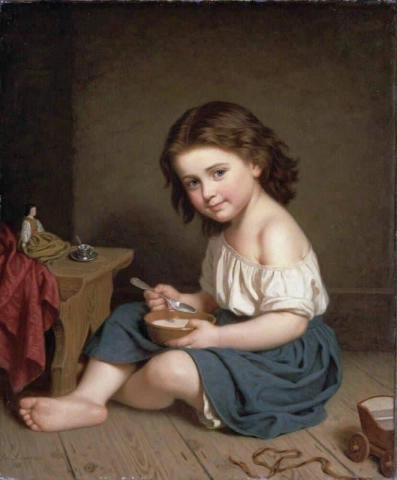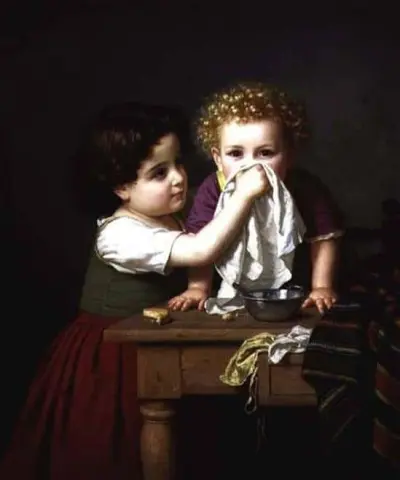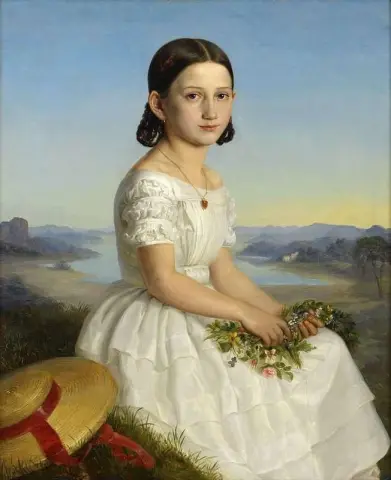

Hand painted reproductions of Amalia Lindegren
Amalia Lindegren: A Trailblazer in Swedish Romanticism
Amalia Lindegren (1814–1891) was a Swedish painter renowned for her emotive portraits and genre scenes that depicted everyday life with poignant realism. As a prominent figure in the Swedish Romanticism movement, Lindegren's art captured the essence of her time while paving the way for female artists in Scandinavia.
Early Life and Education
Born in Stockholm, Sweden, Amalia Lindegren faced humble beginnings but displayed remarkable artistic talent from a young age. Orphaned early, she was raised by her stepfather, who recognized her potential and encouraged her creative pursuits. Lindegren began her formal training at the Royal Swedish Academy of Arts in 1849, becoming one of the first women admitted to the prestigious institution.
In 1850, Lindegren was awarded a royal scholarship to study in Paris, where she attended the atelier of Léon Cogniet. Her time in France exposed her to Romanticism’s emphasis on emotion and beauty. She also traveled to Germany and Italy, drawing inspiration from the works of the Old Masters and contemporary European artists.
Artistic Development and Style
Amalia Lindegren’s style combined the Romantic emphasis on emotion with a strong focus on realism. Her paintings often featured intimate domestic scenes, rural life, and tender portraits of women and children. Her meticulous attention to detail and ability to capture human expressions made her works both moving and relatable.
Lindegren's use of soft, natural colors and delicate brushstrokes brought a sense of serenity and depth to her art. She skillfully blended light and shadow to create a sense of intimacy, making her works resonate deeply with viewers.
Themes and Significance
Lindegren’s art explored themes of family, love, and the struggles of rural life. Her genre scenes often portrayed Swedish peasant life with dignity and empathy, offering a glimpse into the country’s cultural and social fabric during the 19th century.
One of her most famous works, “The Laplanders,” depicts a family from the Sami people, capturing their daily life with remarkable sensitivity. Through her art, Lindegren preserved moments of Swedish history and culture, earning her widespread acclaim.
Achievements and Influence
As one of the first women to achieve recognition in Swedish fine art, Lindegren broke barriers in a male-dominated field. Her works were exhibited at major art venues, including the Paris Salon and the Royal Academy in Stockholm. In 1866, she was made an honorary member of the Royal Swedish Academy of Arts, a testament to her contributions to Swedish art.
Her influence extended beyond her own works. By proving that women could succeed in the arts, Lindegren inspired future generations of female artists in Sweden and across Europe.
Legacy
Amalia Lindegren remains a celebrated figure in Swedish art history. Her ability to combine Romanticism’s emotional depth with a keen eye for realism ensures her place among the greats of the 19th century. Her works continue to captivate audiences, offering timeless insights into human emotion and the beauty of everyday life.
Today, her paintings are housed in prominent collections, including the Nationalmuseum in Stockholm, ensuring her legacy endures for future generations.
Where to Find Reproductions of Amalia Lindegren’s Art
Reproductions of Amalia Lindegren’s heartfelt portraits and genre scenes are available through POD (Painting On Demand). Our handmade oil paintings on canvas capture the emotional depth and beauty of her works, bringing a touch of Swedish Romanticism to your space.
Imagine owning an original-style painting by one of the greatest artists in history. At POD, we offer you the chance to make this dream a reality. Each canvas is faithfully reproduced down to the smallest detail, allowing you to experience the beauty of the artist’s vision in your own home.
Our reproductions are crafted by experienced painters using the finest materials and time-honored methods. We are committed to delivering works of exceptional quality that will inspire and bring joy to your family for generations to come.


















